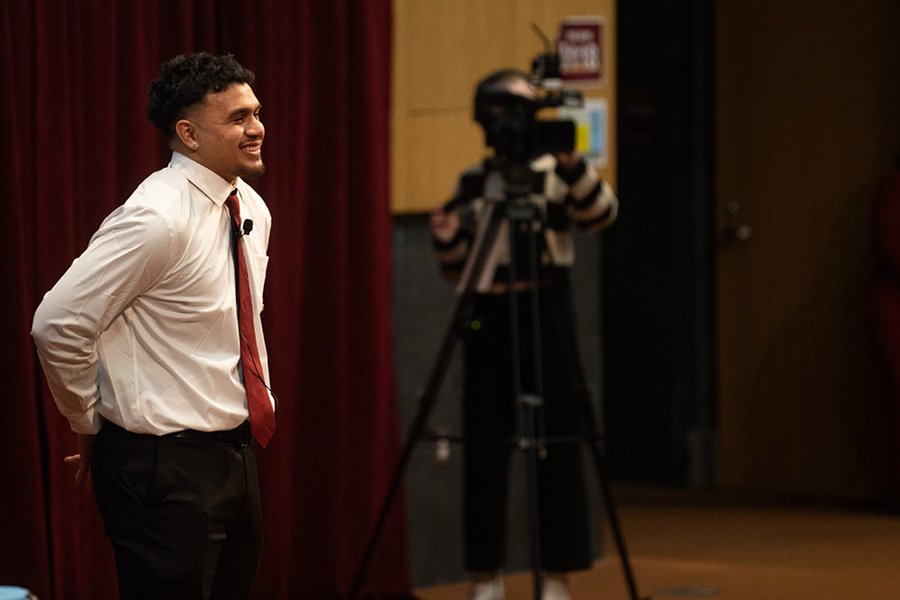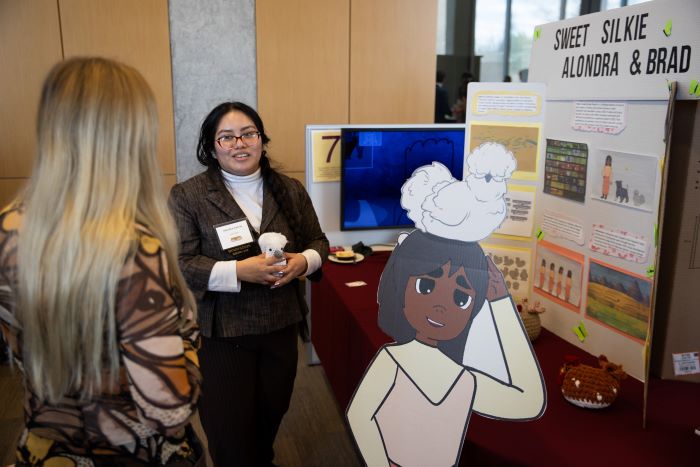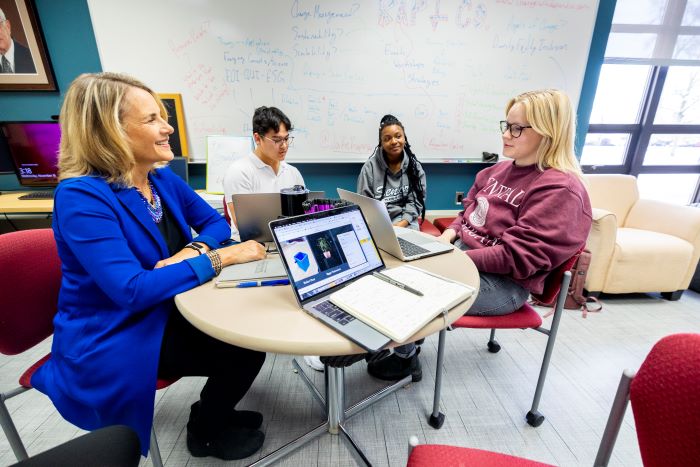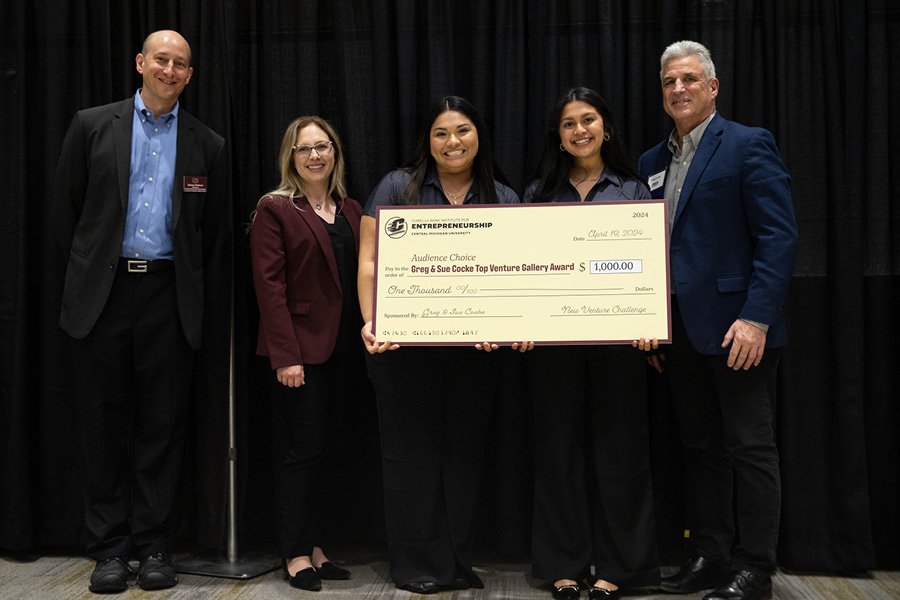
Start up
Passion. Potential. Pitches. Don't miss any of the 2025 New Venture Challenge excitement.
Tune in Friday, April 11 at 1 p.m. for great ideas and fierce competition. Then, join the judges, mentors, spectators and teams as they see who is going home with thousands of dollars in venture financing. The awards broadcast begins at 6:30 p.m. and one team will walk away as the overall best venture.
Central Michigan University’s College of Business Administration is the home of the Isabella Bank Institute for Entrepreneurship and the first Department of Entrepreneurship in the state of Michigan. We are a student-centric hub where experiential, curricular, and external entrepreneurial opportunities intersect.
Our mission is to maximize student success by fostering a campus-wide entrepreneurial mindset that promotes inter-disciplinary collaboration and the creation of new ventures.
We aim to create innovative programming, boost cross-campus and ecosystem collaboration and provide a comprehensive mentoring program.
Our institute provides extracurricular opportunities and is open to all undergraduate and graduate CMU students.
Are you interested in becoming an entrepreneur?
Every journey is unique. Explore the opportunities that interest you.
Andrew McNaught, Ph.D., and Tracy Galarowicz, Ph.D. from the Biology Department, received a $223,665 grant for their project titled: Importance of Food Predators to Lake Whitefish and Cisco Recruitment. This study will look into whether changing food sources or predation explain the changing patterns of two larval fish species; Lake Whitefish are declining while Cisco are increasing in the nearshore areas (depths of < 10m) of the Great Lakes.
Nearshore areas are crucial for native fish. In the case of Lake Whitefish and Cisco, spawning, egg incubation, and larval stage development all take place in these nearshore zones. The populations of these fish have been fluctuating since the early 1900s, due to factors such as overfishing, predation, and a changing environment. Unfortunately, very little is known about the nearshore ecology of the Great Lakes, despite their potential to be greatly affected by stressors such as sedimentation, nutrient addition, pollution, and climate change.
In one portion of this study, doctoral student Kelly Hoyer is examining gut contents and growth rates of larval stage fish and comparing them to prey availability, as well as conducting laboratory experiments to determine foraging capabilities of larval Lake Whitefish and Cisco. Hoyer is also conducting predation trials with Round Goby and Rainbow Smelt, both of which are nearshore predators. These trials will determine if larval Lake Whitefish are more vulnerable than larval Cisco. In another aspect of the study, undergraduate student Julia Harig is conducting trials to determine if Lake Whitefish and Cisco are spending different amounts of energy on respiration. If larval Lake Whitefish expend more energy on respiration than larval Cisco, Whitefish will have less energy for daily activities such as foraging, predator evasion, and lead to slower growth rates.
This project began in March of 2020, but all field sampling had to be delayed due to the pandemic. Luckily, the project was able to be extended and the research has continued. The information gathered about food resources and predation will help fish biologists better manage the population of Lake Whitefish.
This story is brought to you by the Office of Research and Graduate Studies.

Explore special opportunities to learn new skills and travel the world.

Present your venture and win BIG at the New Venture Challenge.

Boost your entrepreneurial skills through our workshops, mentor meetups and pitch competitions.

Learn about the entrepreneurship makerspace on campus in Grawn Hall.

Present a 2-minute pitch at the Make-A-Pitch Competition and you could win prizes and bragging rights!

Connect with mentors and faculty who are here to support the next generation of CMU entrepreneurs.

Are you a CMU alum looking to support CMU student entrepreneurs? Learn how you can support or donate to the Entrepreneurship Institute.